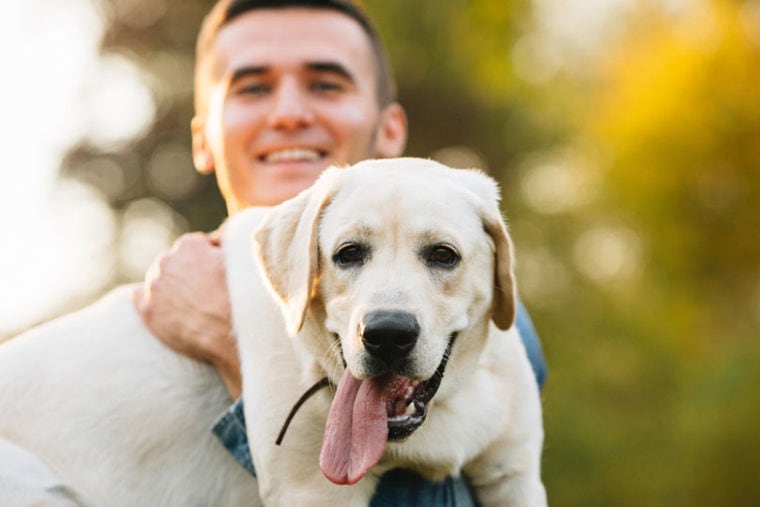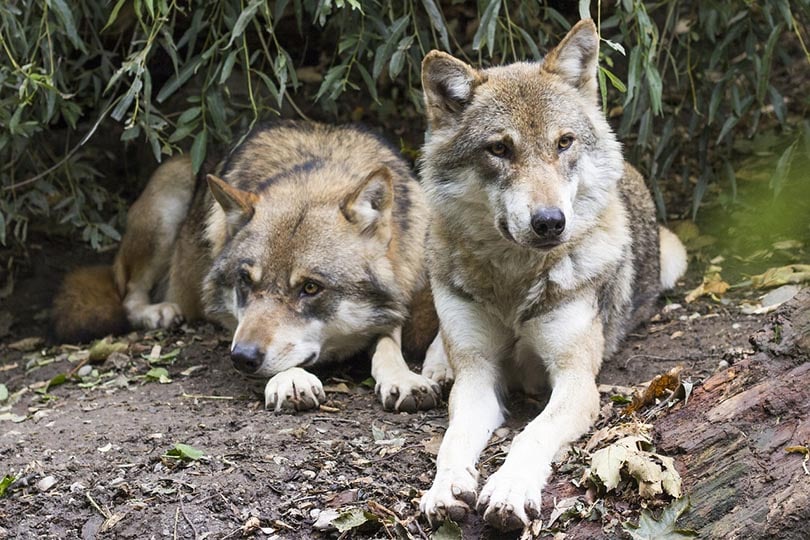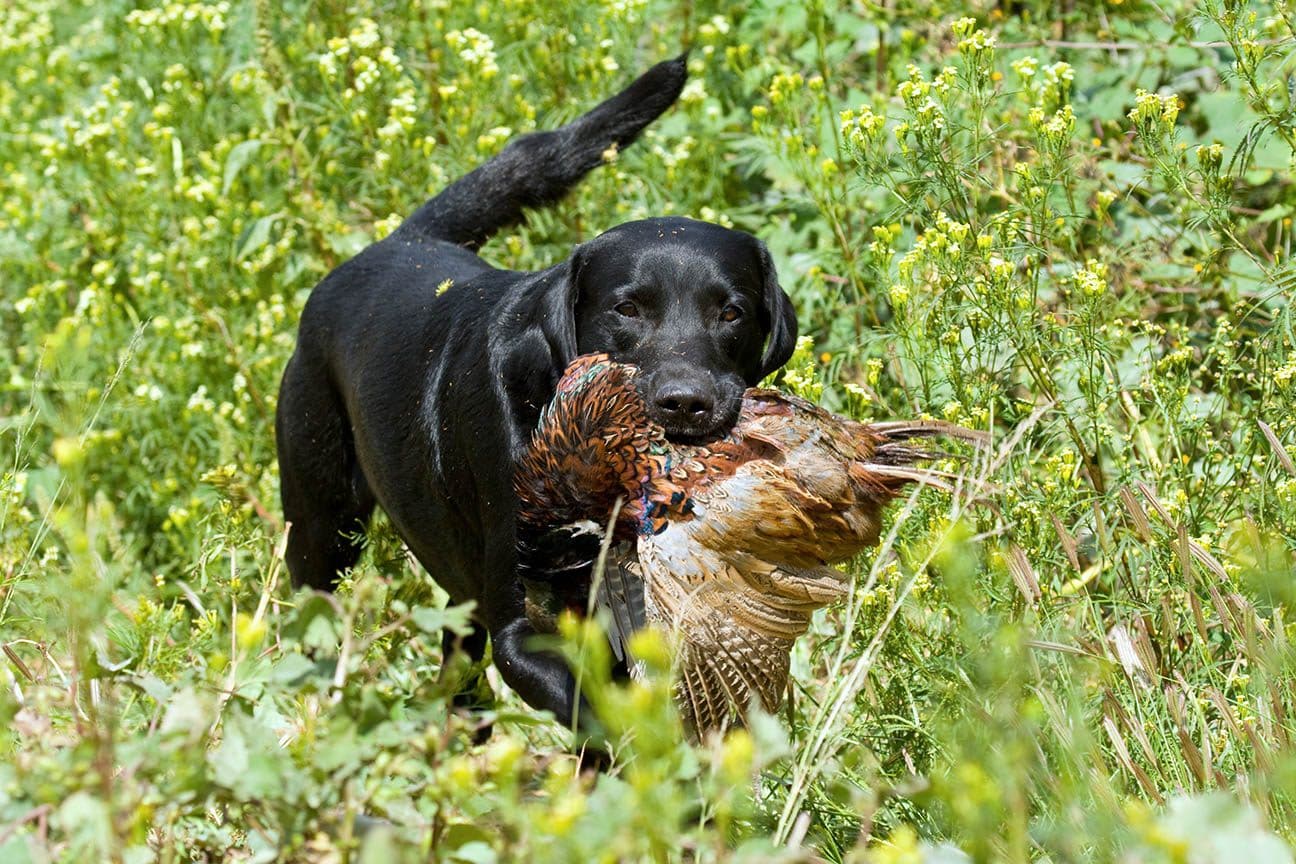
Click to Skip Ahead
Of all the domesticated animals, the bond between humans and dogs is closer than with any other animal. The two species have a history dating back thousands of years, and the close link led to King Frederick II of Prussia stating that “a dog is man’s best friend”.
He made that bold claim in 1786 but even by this date, dogs may have been domesticated for many millennia.
Earliest Signs of Domestication
The close link between humans and dogs dates back so far that it is difficult to date precisely when dogs were first domesticated. There is some evidence, although it is somewhat contested, that domestication may have begun more than 30,000 years ago.
Although it has long been believed that early domestication started with humans taking wolf cubs and disposing of their parents, most modern experts agree that this was unlikely. No matter how young the cub is when it is taken, and no matter how devoted the training and domestication, a wolf remains a wolf and it would have been too difficult to control and unpredictable, especially considering it wouldn’t have provided many benefits to humans at the time.

Did Dogs Domesticate Themselves?
More likely is that wolves would have hung around human encampments, potentially finishing off leftovers from the hunt. Gradually, over generations, they would have become more approachable. From there, it is possible that humans took pups or even attempted to domesticate more mature wolves to provide protection or to aid in hunts.
Dogs were being domesticated at least 15,000 years ago. This means that canine domestication predates the agricultural period, so it is likely that dogs would have helped with hunting but would not yet have been used for herding or other activities.
Signs of Domestication
Remains dated to 13,000 years ago show clear signs that the wolves of old had been domesticated and resembled the domesticated canines of today. Wider eye sockets and shorter noses are considered some of the key markers that distinguish modern dogs from the original wolves.
There are also remains of dogs that were seriously hampered by arthritis and other afflictions: problems that would have led to them being killed or left for dead by their pack, or killed if they were solely working dogs. This indicates that those dogs were considered pets rather than working animals.

Guardians and Herding Dogs
There is evidence that sheep were being herded as far back as 9,000 B.C. However, it is believed that dogs were only used as livestock guardians around 2,000 B.C. and their use as herding dogs, to round up and direct cattle, likely started centuries after this. This coincided with the use of fences and other barriers to keep livestock in and predators like wolves out.
Hunting Dogs
The first domesticated dogs were likely used for hunting and this relationship between hunter and dogs dates back approximately 8,000 years. Hunting dogs may have been used to catch and kill prey, or they may have been used to retrieve killed quarry.

Service Dogs
As the first domesticated dogs were used to help guard and herd livestock, as well as to catch prey, it is obvious why humans first grew close to this previously wild animal. And, in a symbiotic relationship, the dogs were provided shelter and food. As the relationship grew and developed, so too did the relationship between man and dog.
While we might consider service dogs to be a new idea, dogs were certainly used during World War I to find injured soldiers and at the beginning of the 19th Century, it was recommended that Poodles be used to assist those with visual impairments.
The guide dog movement picked up pace after World War I because so many soldiers were left blinded or partially sighted following the use of mustard gas and other chemical agents.
Even in 15th-century England, parish constables would routinely take pet dogs with them on their patrols, to act as companions and protectors, showing that dogs have been around as long as what we consider to be the forerunner to the modern police force.
Therapy and Medical Dogs
Dogs are also used as therapy and medical dogs, with some even being trained to be able to detect cancers and other terminal illnesses in patients, as well as some that can detect when their handler is about to have a seizure.
In 1780, Les Quinze-Vingts in Paris was unofficially used as a guide dog training school and training of dogs to assist blind people continued throughout the 18th and 19th Centuries.

Pet Dogs
While the earliest keepers of dogs may have kept them solely as working dogs, evidence of dog burials dating back 14,000 years exists, and this is a sure sign that dogs were kept as pets by some people.
Estimates vary considerably but there are believed to be between half a billion and a billion dogs in the world today, which is equivalent to one fog for every 8 to 16 people.
The USA has the largest canine population of any country, with an estimated 75 million dogs. Brazil has the second largest population before China.
Conclusion
The link between dogs and humans is a long one, longer than the link between humans and any other animal. The relationship has long been a mutually beneficial one. Initially, dogs would have been used as guardians and for hunting, but they have been used in a wide variety of roles and for many different purposes over the tens of thousands of years that they have co-existed with the human population.
Today, most dogs are kept as pets, but many still perform a variety of tasks, including hunting, herding, and guarding, as well as more complex tasks like detecting cancer and other illnesses in patients and owners. In the animal kingdom, dogs truly are man’s best friend.
Featured Image Credit: Maksym Azovtsev, Shutterstock







